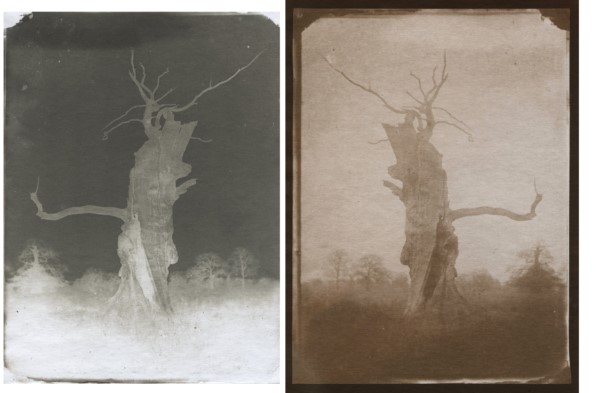
In the Forest of Arden
In winter 2021 / 2022 I retraced the steps of George Shaw, John Percy and Frederick Henry Henshaw – in the same way that they retraced previous steps by painter Heneage Finch. I photographed the trees and landscape in Packington Park, often positioning myself in the same place as these pioneers of photography, in order to understand their relationship to this place and the environmental links between their friendship, landscape and the materials and processes of early photography.
In the 1840s and 1850s, George Shaw and John Percy photographed the trees and landscape at Packington Park, Warwickshire. At the same time, painter Frederick Henry Henshaw and many other members of the Birmingham School of mid-nineteenth century landscape painters such as the Lines family, Thomas Baker of Leamington and John Adam Houston to name a few were actively working and painting in the Capability Brown designed landscape at Packington. Prior to this generation of painters, at the turn of the nineteenth century Heneage Finch, the earl of Aylesford was sketching the trees in Packington using the latest technology in optical devices to render detailed and accurate sketches.
Shaw’s Calotype photographs of Packington are held in the collection at Musee D’Orsay, whilst John Percy’s remain in the collection of the Getty in LA. Paintings of Packington are dispersed widely amongst many collections, often catalogued as being ‘in the Forest of Arden.’
Today many of the trees in Packington have gone or changed beyond recognition across 170 years of environmemtal factors. However, some can still be identified as the trees that were sketched and photographed by this generation of artists. The park follows the tradition set by Heneage Finch in preserving dead trees for their artistic value. These bleached and aged trees are ideal subjects for the calotype photographic process from 1841.
A talk about this work is available online here at the DMU recreative practices workshop (see presentations day 1, panel 2)
This work forms part of my AHRC funded PhD into early photography on Birmingham, thanks to support from Midlands 4 Cities doctoral training partnership.